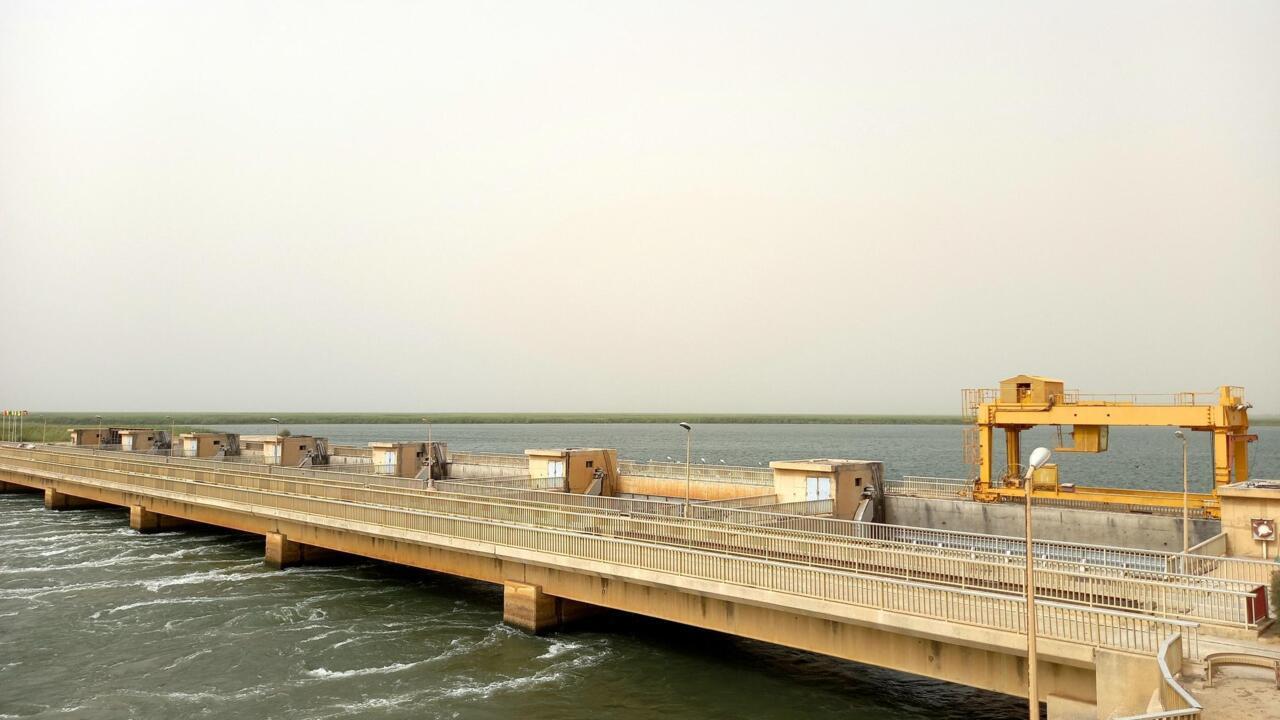Senegal: the Diama dam, an example of shared water management
Audio 02:22
The Diama dam, June 4.
© RFI / Charlotte Idrac
By: Charlotte Idrac Follow
6 mins
In northern Senegal, the Diama dam, in the Saint-Louis region, marks the border with Mauritania.
It is a work of the Organization for the Development of the Senegal River (OMVS), which has four member states: Senegal, Mauritania, Mali and Guinea.
In service since 1986, this “anti-salt” dam has made it possible to develop agriculture in the River Valley.
And 35 years later, it is a successful example of cross-border water management.
Publicity
Downstream, salt water from the Atlantic. Upstream, fresh water. With its seven gates, the mobile dam “blocks” the upwelling of saline water inland. “
There were periods of drought in the 1970s and 1980s when sea salt rose up to 200-300 kilometers upstream. And so it was impossible to grow crops with salt water. And during this period we observed a strong migration from elsewhere to Europe from the whole valley,
”says Demba N'Daw, Managing Director of Soged, Diama's management and operating company.
According to Soged, thanks to the dam, 130,000 hectares are currently irrigated in the valley. The structure also allows the supply of drinking water to Nouakchott, the Mauritanian capital, at 100%; Dakar at nearly 60%. Oumar Sow, current mayor of Diama, remembers the inauguration in 1986: “
I was about 25 years old, I remember everything
: we spent the night here, we danced ... It became another world with the dam. Thousands of fields did not exist. It is an unimaginable improvement, it completely changed the life of the population.
"
Nearby, kinds of reeds have proliferated.
The other side of the coin.
“
Because the salty tongue did not come back up, it allowed the proliferation of typha.
Typha is an invasive plant.
We are looking for solutions of use, in particular by making paper.
We could also use it to make energy.
From a distance you can see the Mauritanian border post with the police, customs and gendarmerie,
”explains the director of Soged Demba N'Daw.
The Diama dam belongs to three countries: Senegal, Mauritania and Mali.
It works "in tandem" with the Manantali hydroelectric dam, in the Malian region of Kayes.
And their management is not a source of conflict.
“
The management of cross-border areas can pose a problem, as we can see on the continent, but also elsewhere.
But the OMVS, by the solidity of the legal base and especially the quality of the relations between the States, made it possible to cooperate,
argues Hamed Diane Séméga, high commissioner of the Organization for the development of the Senegal river (OMVS) .
States ignore territorial sovereignty, we set up an infrastructure, we operate it together, we share the benefits and costs regardless of geographic location.
This is what makes OMVS an example of model cooperation.
"
A source of pride for the organization, which will celebrate its 50th anniversary next year.
Newsletter
Receive all international news directly in your mailbox
I subscribe
Follow all the international news by downloading the RFI application
google-play-badge_FR
Senegal
Economy
Cooperation and Development

